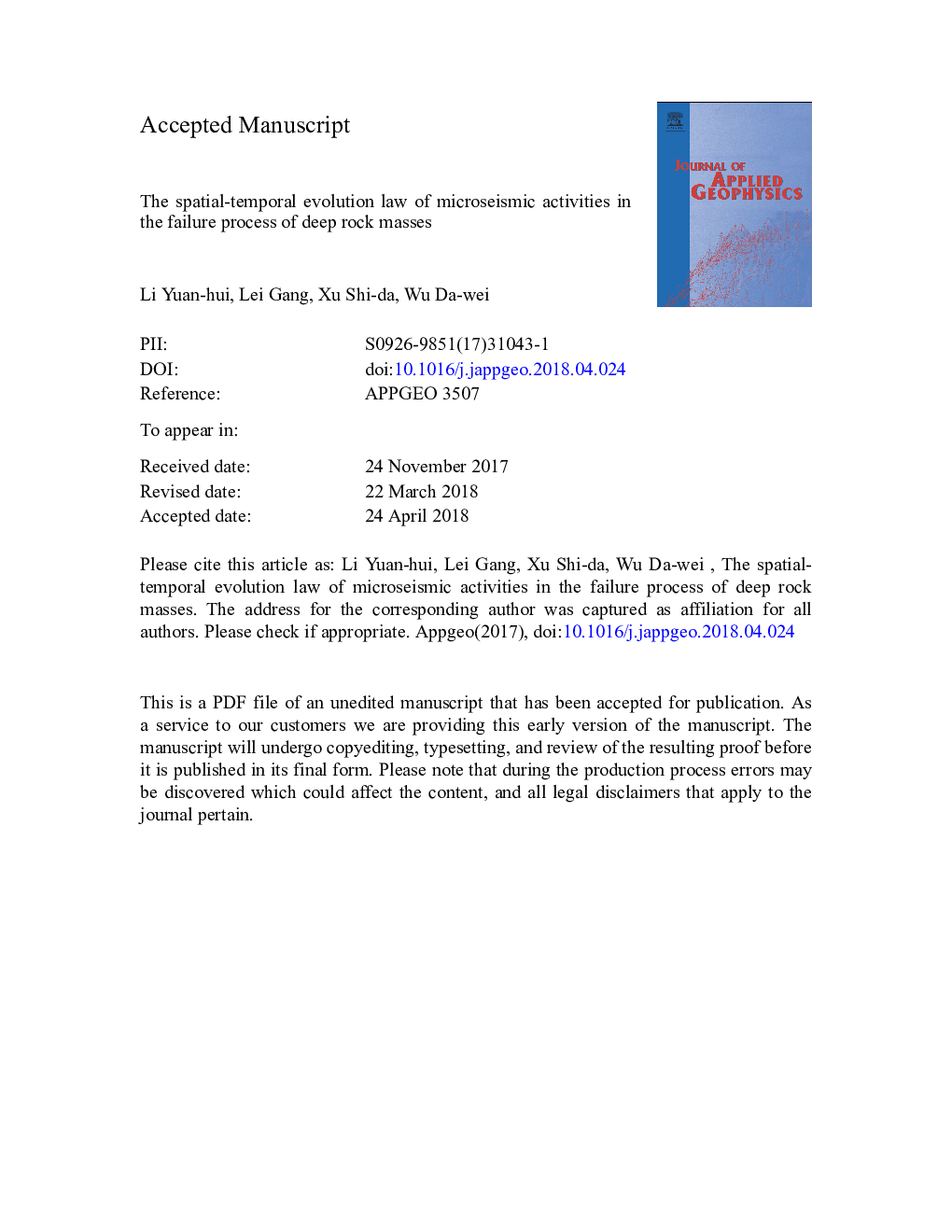| Article ID | Journal | Published Year | Pages | File Type |
|---|---|---|---|---|
| 8915353 | Journal of Applied Geophysics | 2018 | 27 Pages |
Abstract
Under high stress and blasting disturbance, the failure of deep rock masses is a complex, dynamic evolutionary process. To reveal the relation between macroscopic failure of deep rock masses and spatial-temporal evolution law of micro-cracking within, the initiation, extension, and connection of micro-cracks under blasting disturbance and the deformation and failure mechanism of deep rock masses were studied. The investigation was carried out using the microseismic (MS) monitoring system established in the deep mining area of Ashele Copper Mine (Xinjiang Uygur Autonomous Region, China). The results showed that the failure of the deep rock masses is a dynamic process accompanied with stress release and stress adjustment. It is not only related to the blasting-based mining, but also associated with zones of stress concentration formed due to the mining. In that space, the concentrated area in the cloud chart for the distribution of MS event density before failure of the rocks shows the basically same pattern with the damaged rocks obtained through scanning of mined-out areas, which indicates that the cloud chart can be used to determine potential risk areas of rocks in the spatial domain. In the time domain, relevant parameters of MS events presented different changes before the failure of the rocks: the energy index decreased while the cumulative apparent volume gradually increased, the magnitude distribution of microseismic events decreased rapidly, and the fractal dimension decreased at first and then remained stable. This demonstrates that the different changes in relevant MS parameters allow researchers to predict the failure time of the rocks. By analysing the dynamic evolution process of the failure of the deep rock masses, areas at potential risk can be predicted spatially and temporally. The result provides guidance for those involved in the safe production and management of underground engineering and establishes a theoretical basis for the study on the stability of deep rock masses.
Related Topics
Physical Sciences and Engineering
Earth and Planetary Sciences
Geophysics
Authors
Li Yuan-hui, Lei Gang, Xu Shi-da, Wu Da-wei,
